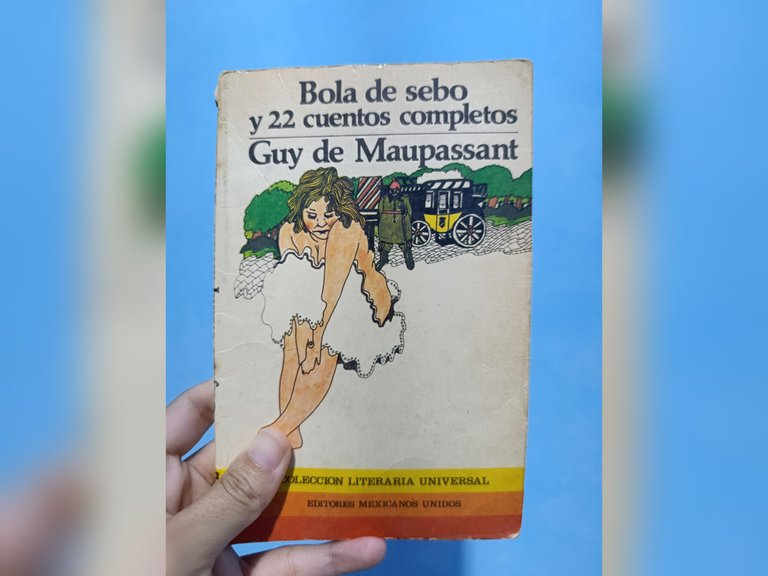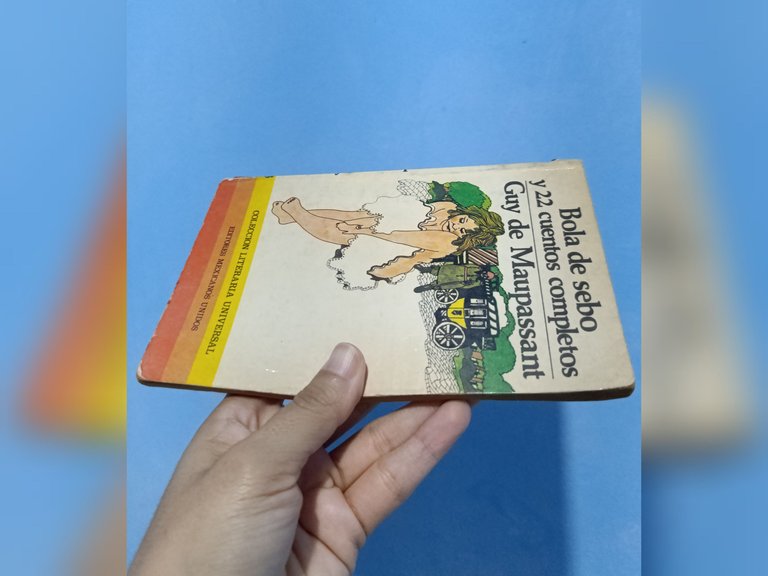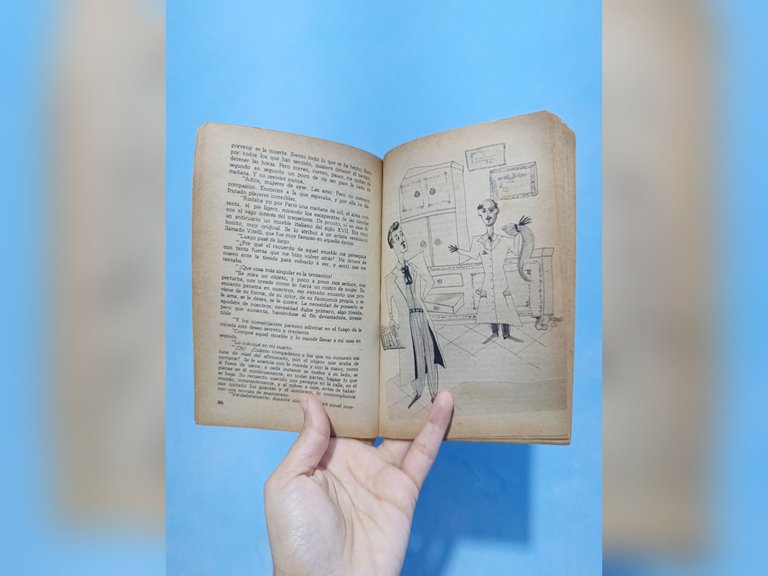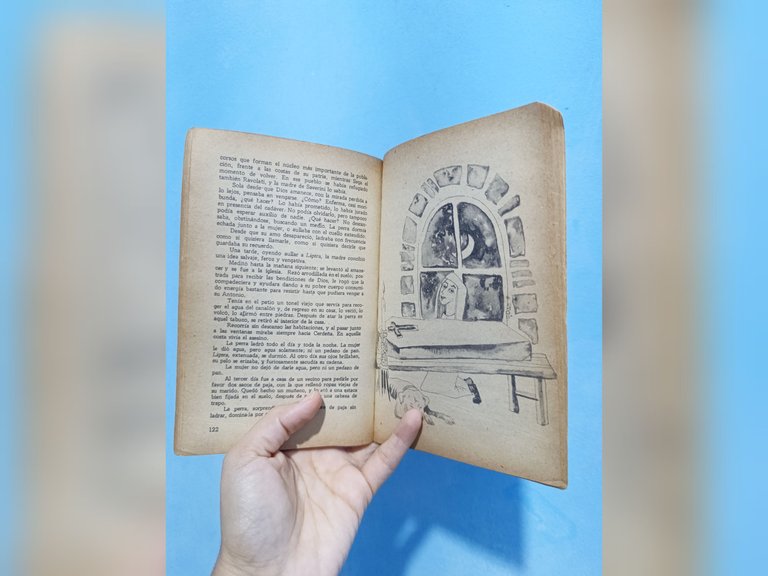Today I bring you my impressions of Bola de sebo and 22 complete stories by the renowned French writer Guy de Maupassant, one of the best storytellers of the 19th century. **Tallow Ball was his first short story, published in 1880, and from then on his style made its mark on world literature. The incorporation of everyday life in his stories, the use of a light but at the same time sober discourse and the economy of words were characteristics of his work that later became established in other storytellers. Reviewing the book I consider highlighting three stories to illustrate my arguments.

The example tells the story of the marriage between Palmira and Gustavo Lerebour. The woman has been showing hostility at home for some time and the man does not know the reasons for such behavior. Her dissatisfaction was such that living together was unbearable, since he remained indifferent, uttering humorous phrases in the face of her displays of bad humor and bitterness. One night, while they were sleeping, they heard footsteps, when Gustavo went to investigate he saw the maid in the middle of a romantic date in the greenhouse, after seeing what was happening he returned to his bed with the images fresh in his mind, which changed the course of their marriage.

This story calls for reflection by dealing with the relationship from a very particular perspective, when addressing these situations was a taboo in literature. Routine tends to stifle passion, which is why it is suggested to put prejudices aside and resume a pleasurable sexuality. Marriage should not be considered synonymous with boredom, laziness and resignation. The importance of communication is also emphasized when the relationship goes through bad times, once feelings are externalized and a reunion takes place, the relationship moves to another level.
On the other hand, the story Alongside a dead man places us in a gloomy and mysterious scenario. The protagonist is dying of tuberculosis, but being a fan of Arthur Schopenhauer and his philosophical postulates, he attends the wake of the German thinker. By then the narrator introduces us to Schopenhauer as the greatest destroyer of dreams due to his devotion to pessimism and his atheistic nature.

As the story progresses, the atmosphere of fear intensifies, the corpse's face changes and the air is filled with stench. At midnight, when only the protagonist and a companion are by the coffin, they are shocked to see a whitish substance coming out of the coffin. After recovering from the shock, they decide to clear up the mystery, leaving the end of the story with the sensation of being in front of a good piece of black humor.
The last story in this selection is The happiness, which starts with a debate on the subject of love. An old man begins to tell the story of Susana Sirmont, a young woman of high social standing who ran away from home with a young military man who had nothing to offer but love. She left behind all the comforts to walk an unknown path, disappearing forever.

Later, half a century later, that old man was able to see Susana in Corsica, she was also an elderly woman who lived modestly in a humble house, where her husband, an old man with deafness, also lived. When they recognized each other and talked, she told him that all those years she lived in the midst of many shortages, she never lived among luxuries again and experienced several adversities, but she was never so happy since she was able to experience the purest love, the one that overcomes all tests, including time.
As can be seen, Guy de Maupassant uses everyday themes to construct stories that are engaging, since his stories are still relevant, having been published more than a century ago. It is there where we can appreciate a narrator who privileges the substance of the story rather than worrying about descriptions or presenting a very stilted language. I believe that reading this author and assimilating his work should be fundamental for all those who aspire to become writers.
Versión en EspañolHoy les traigo mis impresiones sobre Bola de sebo y 22 cuentos completos del reconocido escritor francés Guy de Maupassant, uno de los mejores narradores del siglo XIX. Bola de sebo fue su primer cuento, publicado en 1880, y a partir de allí su estilo se hizo sentir en la literatura universal. Incorporar la cotidianidad en sus historias, utilizar un discurso ligero pero a la vez sobrio y la economía de palabras fueron características de su obra que posteriormente se instauraron en otros narradores. Revisando el libro considero resaltar tres relatos para ilustrar mis argumentos.

El ejemplo cuenta la historia del matrimonio entre Palmira y Gustavo Lerebour. La mujer lleva tiempo mostrando hostilidad en el hogar y el hombre desconoce las razones para adoptar tal conducta. La insatisfacción de ella fue tal que la convivencia era insoportable puesto que él se mantenía indiferente, pronunciando frases cómicas ante las muestras de mal humor y amargura. Una noche, mientras dormían, escucharon pasos, cuando Gustavo acude a investigar observa a la empleada doméstica en medio de una cita romántica en el invernadero, tras ver lo que sucedía regresó a su cama con las imágenes frescas en su mente, lo que cambió el rumbo de su matrimonio.

Este cuento llama a la reflexión al tratar la relación de pareja desde una perspectiva muy particular, cuando abordar estas situaciones era un tabú en la literatura. La rutina suele ahogar la pasión, por tal razón la sugerencia de alejar los prejuicios y retomar una sexualidad placentera. El matrimonio no debería considerarse sinónimo de hastío, dejadez y resignación. También se enfatiza en la importancia de la comunicación cuando la relación pasa por malos momentos, una vez que se exteriorizan los sentimientos y se produce un reencuentro, la relación pasa a otro nivel.
Por su parte, el cuento Junto a un muerto nos ubica en un escenario tétrico y misterioso. El protagonista está muriendo de tuberculosis, pero al ser fanático de Arthur Schopenhauer y de sus postulados filosóficos, acude al velorio del pensador alemán. Para entonces el narrador nos presenta a Schopenhauer como el mayor destructor de sueños debido a su devoción por el pesimismo y su naturaleza atea.

A medida que avanza el cuento se intensifica la atmósfera de miedo, el cadáver va cambiando su rostro y en el aire se respira pestilencia. A medianoche, cuando solamente el protagonista y un acompañante están al lado del féretro, observan impresionados cómo del ataúd sale expulsada una sustancia blanquecina. Tras reponerse del susto deciden esclarecer el misterio, quedando el final del relato con la sensación de estar ante una buena pieza de humor negro.
El último cuento de esta selección es La dicha, el cual parte de un debate cuyo tema es el amor. Al tomar la palabra un anciano comienza a relatar la historia de Susana Sirmont, una joven de elevada posición social que huyó de casa junto a un joven militar que no tenía nada que ofrecer, solamente amor. Ella dejó atrás todas las comodidades para transitar por un camino desconocido, desapareciendo para siempre.

Posteriormente, medio siglo después, aquel anciano pudo ver a Susana en Córcega, también era una mujer de avanzada edad que vivía modestamente en una casa humilde, donde también habitaba su esposo, un anciano con sordera. Al reconocerse y conversar, ella le comentó que todos esos años vivió en medio de muchas carencias, jamás volvió a vivir entre lujos y experimentó varias adversidades, pero jamás fue tan feliz ya que pudo experimentar el amor más puro, el que supera todas las pruebas, incluyendo el tiempo.
Como se advierte, Guy de Maupassant utiliza temas cotidianos para construir historias que atrapan puesto que sus relatos aún tienen vigencia, siendo publicados hace más de un siglo. Allí es donde se puede apreciar a un narrador que privilegia lo sustancioso de contar en lugar de preocuparse por las descripciones o presentar un lenguaje muy rebuscado. Considero que leer a este autor y asimilar su obra debe ser fundamental para todas las personas que aspiran a convertirse en escritores.
✓Photos from my personal gallery, edited with Fotocollage.
✓Text translated with DeepL.
✓Fotos de mi galería personal, editadas con Fotocollage.
✓Texto traducido con DeepL.
